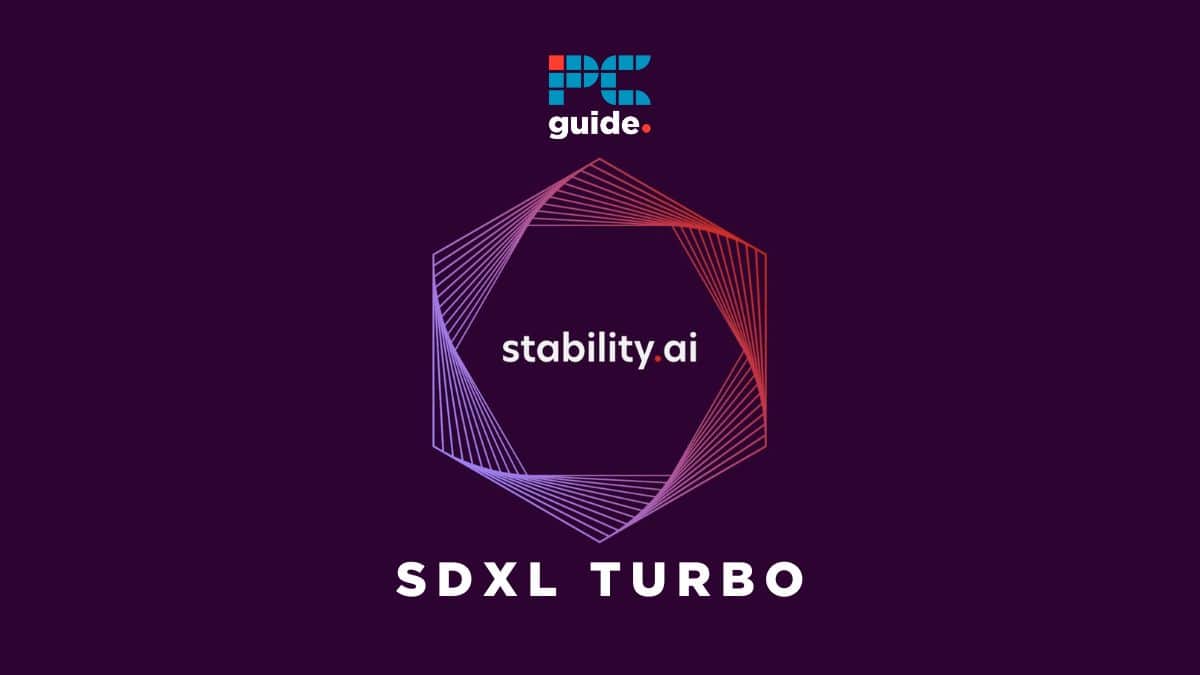StabilityAI release SDXL Turbo AI image generator

Table of Contents
SDXL Turbo is the latest iteration of an open-source AI image generator from Stability AI. The firm in question has been leading the way for free and open-source software of this kind, that you can install and run locally on your computer (with a little know-how). Stable Diffusion is widely regarded as the world’s best open-source AI art generator today, and its generated images have progressively gotten higher quality throughout the year. This time last year, AI images were plagued by artifacts and blurriness, faces were inhuman, and hands had too many fingers. These are all issues that this state-of-the-art SDXL Turbo model aims to fix.
What is SDXL Turbo from Stability AI?
The SDXL (Stable Diffusion XL) Turbo model from Stability AI is an open-source AI art generator. Specifically, it’s a real-time text-to-image generation model based on the diffusion generation method. This means that it’s a type of artificial intelligence that takes an input prompt (a length of text, written in natural human language) and outputs an image file. Open-source is a software term meaning that the code of the software itself is publicly available for anyone to look at (so basically software developers, who know what they’re looking at).
Prime Day is finally here! Find all the biggest tech and PC deals below.
- Sapphire 11348-03-20G Pulse AMD Radeon™ RX 9070 XT Was $779 Now $739
- AMD Ryzen 7 7800X3D 8-Core, 16-Thread Desktop Processor Was $449 Now $341
- ASUS RTX™ 5060 OC Edition Graphics Card Was $379 Now $339
- LG 77-Inch Class OLED evo AI 4K C5 Series Smart TV Was $3,696 Now $2,796
- Intel® Core™ i7-14700K New Gaming Desktop Was $320.99 Now $274
- Lexar 2TB NM1090 w/HeatSink SSD PCIe Gen5x4 NVMe M.2 Was $281.97 Now $214.98
- Apple Watch Series 10 GPS + Cellular 42mm case Smartwatch Was $499.99 Now $379.99
- ASUS ROG Strix G16 (2025) 16" FHD, RTX 5060 gaming laptop Was $1,499.99 Now $1,274.99
- Apple iPad mini (A17 Pro): Apple Intelligence Was $499.99 Now $379.99
*Prices and savings subject to change. Click through to get the current prices.
StabilityAI announced the release of SDXL Turbo via blog post, on Tuesday, November 28th. The new AI image model “is based on a novel distillation technique called Adversarial Diffusion Distillation (ADD), which enables the model to synthesize image outputs in a single step and generate real-time text-to-image outputs while maintaining high sampling fidelity.”
Is SDXL Turbo the best AI art generator?
In our collective opinion here at PC Guide, SDXL Turbo is still not the best AI image generator. However, it is the best open-source AI image generator. For some, this distinction will be very important, changing how and where you can use it quite significantly. For most, the open-source nature of the software isn’t important, and the priority will be on aesthetic quality. The crown in that regard is staunchly held by Midjourney.
It does, at least, have a few things that set it apart from its competition.
SDXL Turbo performs extremely well on commercial consumer hardware (I didn’t say NVIDIA out loud, but if you follow the AI space then that’s what you heard, right?) with a “new distillation technology, enabling single-step image generation with unprecedented quality, reducing the required step count from 50 to just one.” This ‘new technology’ refers to an updated distillation technique, which uses a combination of “adversarial training and score distillation.”
Essential AI Tools
This new distillation technique, known as Adversarial Diffusion Distillation, iterates on the foundation of SDXL 1.0. By incorporating “ADD, SDXL Turbo gains many advantages shared with GANs (Generative Adversarial Networks), such as single-step image outputs, which largely fixes the blurriness and image artifact issues mentioned earlier.
Where and how can you use the SDXL model?
Source code and model weights can be downloaded for free from Hugging Face, both of which are “under a non-commercial research license that permits personal, non-commercial use” for the time being.
Alternatively, you can try it without downloading anything via Stability AI's image editing platform Clipdrop, with “a beta demonstration of the real-time text-to-image generation capabilities.”

